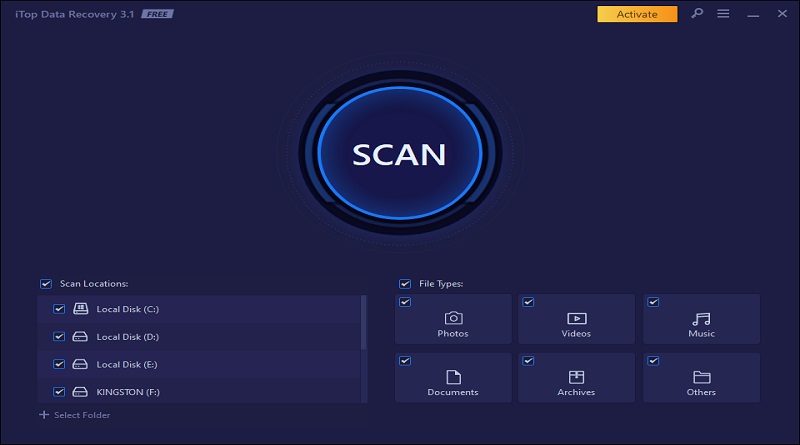Third-Party Data Breaches and How to Counter Them in 2021

The year 2020 was a roller coaster for every industry thanks to the corona virus pandemic. Companies have shifted to digital means of operations. It seems like an easy way of working, however, it has also paved a clear way for fraudsters to fulfil their malicious desires. The digital world is serving as a goldmine for criminals and they have come up with a better way of terrifying firms.
Data breaches included different methods like malware, ransomware, and phishing attacks, but technological betterments have brought changes to the criminals’ life too. There is a more sophisticated type of data breaching known as a third-party data breach. The bigger question is, what is a third-party data breach and how does it work? The blog covers everything for you. Keep reading to explore this rising fraud for cloud-based environments.
What Is a Third-Party Data Breach?
Generally, data breach refers to compromise on sensitive information that companies save on cloud-storage platforms for enhanced security. However, fraudsters have figured out a way to breach improved security measures in a cloud-based environment. Artificial intelligence has not only backed companies, but scammers have developed algorithms for data breaches as well.
Now, a more sophisticated way is available for criminals to breach data and that is a third-party data breach. Also known as the supplier breach, fraudsters use vendors of organizations to access sensitive information such as the name of employees, their account details, or any other information they can acquire. The vendors are usually payment gateways, email servers, etc. that store plenty of information about the end-users or employees on cloud servers.
Top Three Third-Party Breaches in 2020
Every year, there is a long list of companies that face data breaches or vendor data breaches. According to Forbes, the first half of 2019 exposed approximately 4.1 billion records. The number has significantly increased in 2020. Unfortunately, many of the big names of the industries are targets too. Small businesses are easy to target, so fraudsters take complete advantage of breaching data. Moreover, it has become easier with vendors involved in the system. Here are the top three vendor data breaches in 2020.
Marriott Data breach
This is the second time in the last two years that Marriott has experienced a data breach because the third-party software was compromised. The vendor data breach exposed information of 5.2 million guests. How did attackers lay hands on personal information so easily? Credentials of two employees were obtained and both accounts sufficed for the scammers’ needs. The stolen information included phone numbers, account details, airline loyalty program details, etc. The hotel could not identify that email accounts of the employees have been compromised and someone is accessing confidential information.
Instagram had a third party named Social Captain that assists businesses and individuals in increasing their Instagram followers and the number of likes on posts. The vendor leaked thousands of Instagram profile credentials and a website bug provided access to profiles associated with Social Captain without logging in. This meant that anyone can enter a unique ID to find out login credentials. Instagram immediately identified the breach. Users on any social media platform should never share passwords or any other sensitive information with vendors.
P&N Bank
Australian-based P&N bank, with the help of a third-party host service, was conducting a server upgrade. It experienced a cyber attack earlier this year and information like names, phone numbers, account details, and balances were compromised. According to reports, the bank sent emails to 96,000 customers for informing them about the breach.
On-Premises Identity Verification to Combat Vendor Breaches
Considering the rise in the number of vendor data breaches, it is not wrong to say that cloud-based storage is not secure anymore. Cyber criminals have developed advanced methods for breaching information, which is increasing the number of identity theft and financial crime cases across the globe. However, there is a way to combat third-party data breaches. If organizations use an on-premises identity verification system, they are likely to stay safe from cyber attacks. With on-premises identity verification, the customer information is not stored on any cloud platform. All the verification results stay between the firm and the end-user during the on boarding process. Once the company successfully onboard the client, there is no stored data available for fraudsters to breach and misuse.
It All Adds Up To
With the advent of technology, cyber criminals are coming up with better ways of implementing their evil plans. Artificial intelligence and machine learning are not only helping organizations and individuals, but fraudsters are also using AI algorithms for their evil desires. Using the same methods, cloud-based storage is not safe anymore. Data breaches in the past few years have clarified that securing data is becoming a challenge for firms. Today, third-party data breaches are also possible which not only exposes the information of millions of customers but it also significantly reduces the risk of the criminals to be traced. On-premises identity verification is yet another way of combating data breaches.





